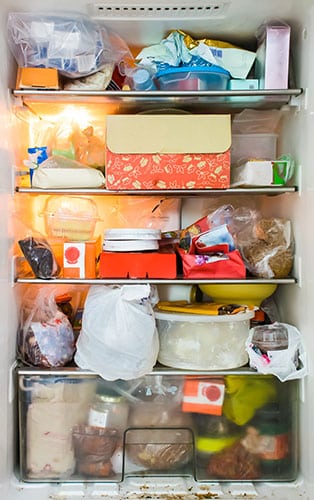The clock has sprung forward, giving us more precious daylight hours. Spring season tends to be a time when we reevaluate the old, refresh ourselves and our homes. I wanted to share some tips which may make you think about new behaviors to enhance overall health. Look for a second installment next week for even more tips.
1. Cleaning Tips in The Kitchen
Start by clearing out all sweet drinks including sweet tea, fruit juice, sport drinks and regular soda. I often hear that these drinks are for “someone else in the house” but if you can’t resist them they should be eliminated from the home. Even without diabetes, the most recent information recommends “reducing empty calories from beverages.” Stay hydrated with water. It helps your skin, memory, joints and regulates your body temperature as the weather gets warmer. Think about getting a water filter system (to limit pesticides) even if it is as simple as a glass pitcher with a disposable filter. The cost and trouble of carrying bottled water will disappear. Get water delivered in a cooler system if it is easier for you and your family. If water is unappealing try sugar free drinks, seltzer waters, zero calorie flavored waters or sugar free drops added to water. Coffee in moderation is back on the “beneficial list”, especially with diabetes. Unsweetened tea is a great choice. Cold low fat milk is a great thirst quencher, but should be counted as a carbohydrate.
2. Clean Out The Refrigerator

Tart dark cherries are a perfect spring choice, have a low glycemic index and anti-inflammatory properties. Use summer zucchini, squash, and tomatoes which are delicious and easy to add to soups or stews. Fresh summer corn is readily available and 1 small ear is a serving of carbohydrate. Artichokes are a tasty vegetable with 9 grams of fiber and take a long time to peel and eat. Dip in a mustard base or olive oil sauce. Fresh asparagus and spinach are plentiful in the spring, contain Vitamin C, K, and may assist in blood sugar control. They also aid in bone health as all leafy greens do. Peaches, plums or any stone fruits are extremely good choices with Vitamin A and C. Radishes, which are abundant in the spring, are low carbohydrate, high in vitamin C and can add a natural peppery taste to other foods. Mushrooms come in many varieties including button, oyster, Portobello, and Shiitake. Mushrooms have had health benefits since ancient times and are very low in calories and carbohydrates. Grilled mushrooms often have a beefy flavor and texture and can be added to ground meat as filler.
Buy small sweet potatoes for a treat with high fiber, vitamin K, vitamin A and great taste. Include foods that contain tryptophan, which can boost your mood by raising serotonin levels, including bananas and avocados. All these fruits and vegetables have high fiber contents which help lower the risk of obesity and can assist in blood sugar regulation. According to research done in Sweden and France, “eating fiber can also stimulate the brain to feel fuller, decrease glucose made in the liver and increase the resting metabolism.” Grow your own outdoor vegetable garden. Invest in fruit trees. Put low fat cheese sticks in your refrigerator: they have 8 grams of protein and are satisfying as a snack. Always have a protein food including eggs, egg beaters or egg whites for a quick and healthy breakfast when served with a carbohydrate choice.
3. In The Freezer
If your meat has freezer burn, get rid of it. If you have containers of half eaten frozen food for 6 months or more – toss them. Restock your freezer with frozen vegetables and fruits packed in water, which retain higher amounts of nutrients compared to cans. Frozen fruits and vegetables are quick and easy to prepare with low amounts of sodium. Stock sources of lean protein, including salmon or chicken, which can be easily cooked on the grill or in the oven.
4. Clear Out Old Boxes and Cans in The Cabinets
Get rid of all the Ramen noodles, regular canned soups, boxed meal kits, pasta in cans and vegetable shortening used for cooking. Throw out pre-sweetened cereals including Fruit Loops, Frosted Flakes or cereals with added honey, clusters and sugar. The processed sugar and sodium is these products will affect your blood pressure, blood sugar and cardiac health. Excess sodium adds to dehydration and interrupts fluid balance. Substitute low sodium soups, canned fish or anchovies, canned beans and olives. Rinse canned beans of excess sodium. Check the nut butters which can become rancid if left open. Replace nut butters with natural, unsalted varieties and buy in small quantities to retain freshness. Find new grains and include bags of wild rice, brown rice, bulgur, barley, quinoa and wheat berries: all are good sources of fiber and high quantities of carbohydrates. Try to buy cereals including plain Cheerios, Familia Swiss Muesli or All Bran. You can add fresh fruit and sliced nuts for more flavor and nutrients. Buy cereals that have at least 3 grams of fiber per serving, sodium less than 240mg, and make sure “sugar” is at the end of the list of ingredients. Include air popped popcorn which is high in fiber; 2½ cups are considered a serving.
5. Check All Jarred Spices in The Cabinet
Many times after 1 year these products lose their color, potency and flavor. Plant a kitchen window garden – herbs such as dill, basil and parsley are easy to grow in pots and are ready for chopping or mincing. Purchase new spice jars of garlic powder, tarragon, rosemary, cinnamon and ginger which are all anti-oxidants and add flavor to your foods. Cumin and curry reduce inflammation, which is common in diabetes.
6. Change Out Nuts and Cooking Oils
Since these foods are fats they go rancid and spoil quickly. Nuts are a perfect snack in moderation; replace the old ones and store them in the freezer for a longer shelf life. A recent study done on over 100,000 people who eat nuts showed “a lower risk of premature death when eating small amounts of nuts everyday.” Nuts contain unsaturated fatty acids, vitamins, fiber, minerals and protein. Buy them in the shell to slow down your eating. When cooking at high temperatures choose canola, peanut or grape seed oils. Olive oil looses its benefits and burns when used at high temperatures and is better for drizzling on bread or vegetables or salad dressings.
7. Check Plastic Containers for BPA Content
Look for glass containers to pack lunches and left-overs, or upgrade the quality of your plastic containers. Use microwave safe dishes or glass instead of plastic when heating food.
These are just a few spring cleaning tips to get you started. We will review other rooms of the house in our follow up newsletter – Spring Cleaning Tips | Part 2. Get cleaning!
Have a question or comment? Post below or email me at RKleinman@adwdiabetes.com if you would like to share them with ADW diabetes.
NOTE: Consult your Doctor first to make sure my recommendations fit your special health needs.







Leave A Comment